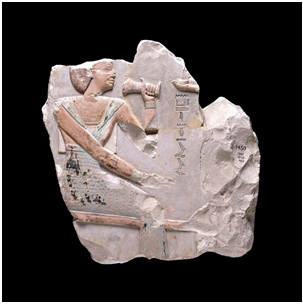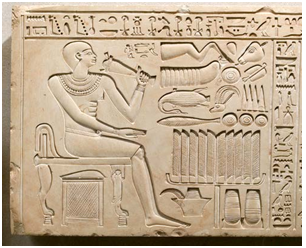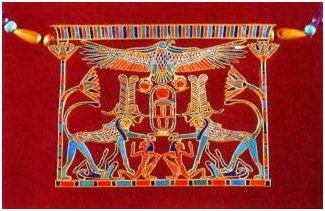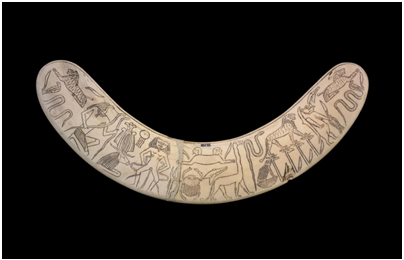Reference no: EM13813990
Quiz AR310 Ancient Art: Tombs and Treasures
Question 1- During the 5th and 6th Dynasties, high ranking officials who ruled over remote areas were able to request the best and highest ranking royal artists from the capital cities to come and decorate their tombs.
-True
-False
QUESTION 2- According to our text, after Pepy II's reign, the one centralized power collapsed and eventually reformed around what two central cities?
-Thebes and Memphis
-Giza and Herakleopolis
-Memphis and Giza
-Thebes and Herakleopolis
QUESTION 3- Figures were positioned differently in front of offerings on funerary stelae. Describe the differences between those positions depicted in the Old Kingdom versus the First Intermediate period.
QUESTION 4- In pre-unification Theban relief style (the final stage of Upper Egyptian style), which of these is NOT a way in which facial features were represented?
-A black band encircles the eye
-The nose and ears are smaller and more delicate
-A cosmetic line runs from the corner of the eye to the ear
-The lips are thick and protruding
QUESTION 5- What was one of the most distinctive characteristic of the mature male figure in the First Intermediate Period?
-Rolls of fat
-Broad shoulders
-Feet positioned together
-Increased musculature
QUESTION 6- This relief fragment depicts one of the many wives of ________________, and is one of the only surviving pieces from his funerary complex at Deir el-Bahri.

QUESTION 7- On a (stolen) statue in kingNebhepetraMontuhotep's temple, the side of the throne is decorated with a sematawy emblem. What did this symbolize?
-The King smiting foreigners
-Unification of two lands
-The spirit moving from ba to ka
-Rebirth from the lotus
QUESTION 8- The highly colored stelae of Inhurnakht and his wife had several characteristics typical of the First Intermediate Period. This comes from the ___________________ cemetery in Upper Egypt
QUESTION 9- It is strongly believed that this pharaoh help reunite Ancient Egypt:
-King Pepy II
-King NebhepetraMontuhotep
-Many Herakleopolis kings contributed
-King Senwosret I
QUESTION 10- Based upon the layout of the offerings of this funerary stela of Maaty, would this be considered to be First Intermediate Period or Middle Kingdom?

-First Intermediate Period
-Middle Kingdom
QUESTION 11- At the dawn of Middle Kingdown, a new type of statue was introduced. Known as the ____________ statue, the figure is seated on the ground with knees drawn up to the chest and is wrapped in a tightly fitted garment.
QUESTION 12- In the Middle Kingdom, the interior of coffins would often have a _________________ at the north end of the east side, that the deceased would face while laying on their left side.
QUESTION 13- This piece of jewelry is featured in our text and was highly valued to the precious stones that had to be procured outside of Egypt. Match the precious stone to the area that it has to be obtained from:

-Turquoise
-Carnelian
-White lapis lazuli
QUESTION 14- Which of these animals is generally NOT considered a strong protective symbol:
-Crocodiles
-Lions
-Baboons
-Cows
QUESTION 15- Elite figures would often been shown with a receding hair line and bald patch to show their wisdom and maturity.
-True
-False
QUESTION 16- The area around Dendera in Upper Egypt served as a cult center for which goddess?
-Hathor
-Nut
-Nephthys
-Isis
QUESTION 17- In the First Intermediate period and Early Middle Kingdom, pyramid texts were expanded to include guides and maps for the afterlife. These were now known as ____________?
QUESTION 18- The lotus flower was considered a symbol of:
-Fertility
-Re-birth
-Reunification
-Smiting
QUESTION 19- This wand or stick contains protective animals and is found in our textbook.
The figure of Ipi has limbs of a lion, but a head of a:

-Snake
-Crocodile
-Frog
-Hippopotamus